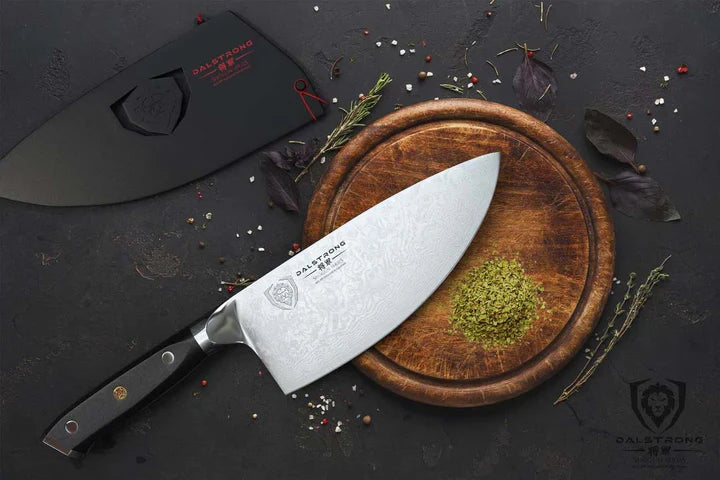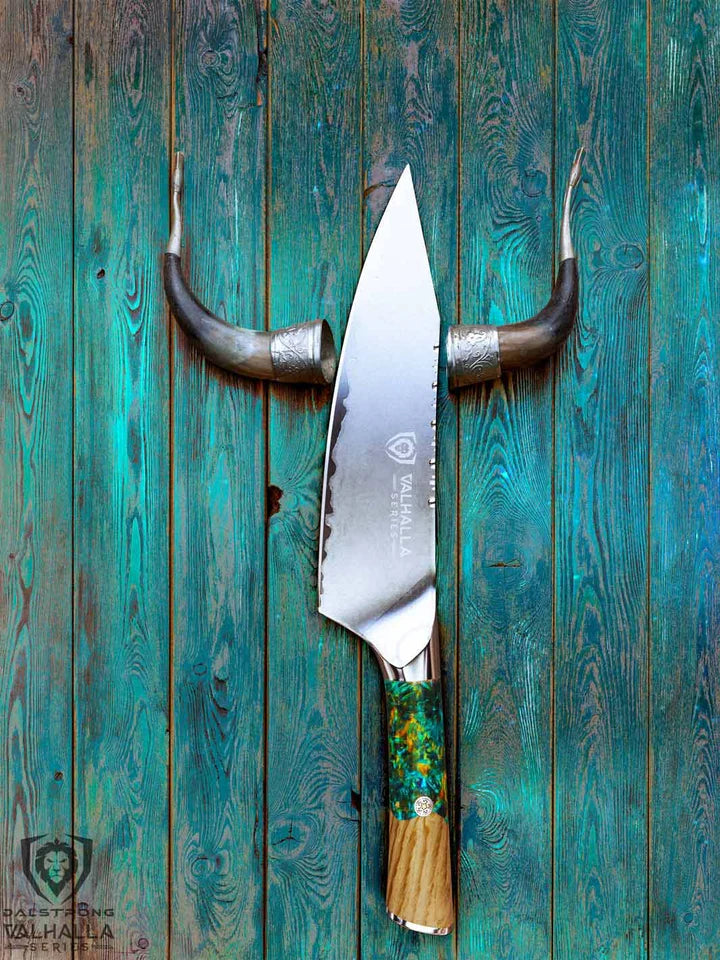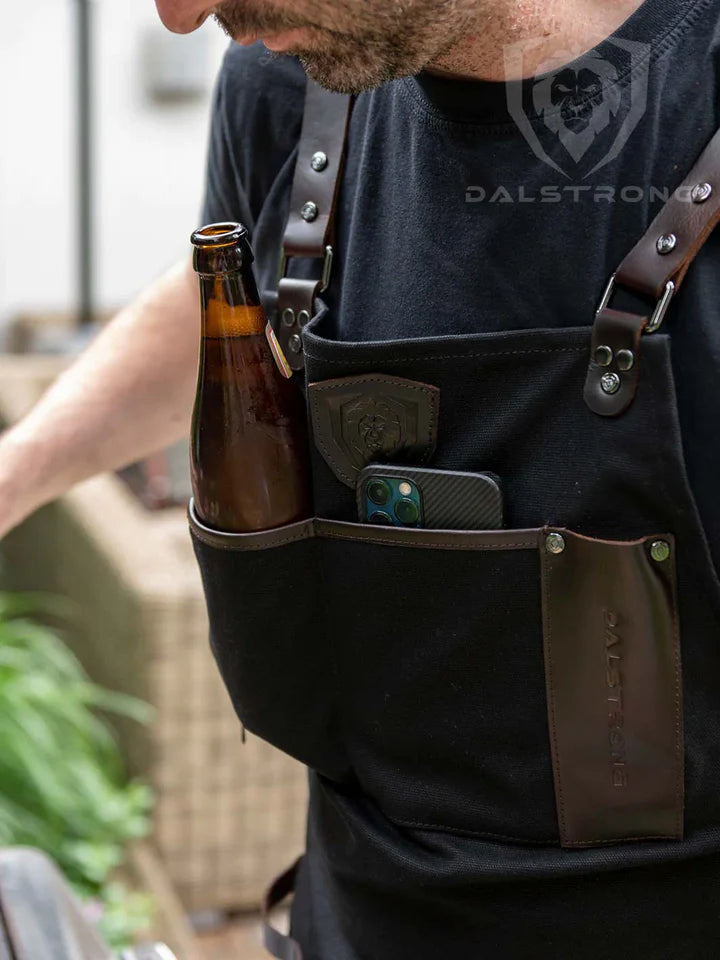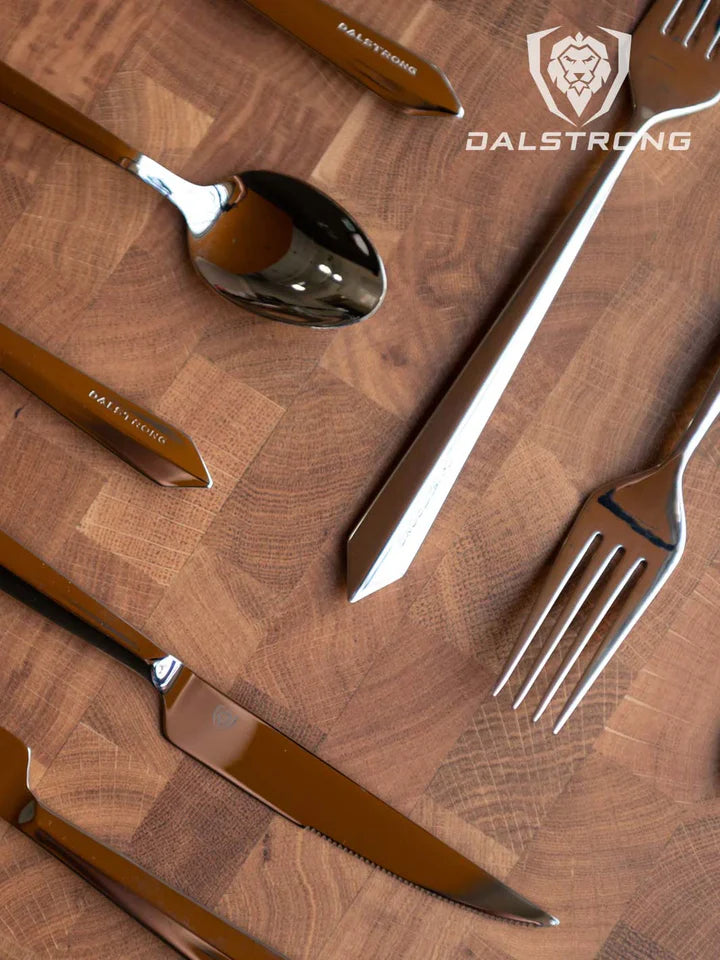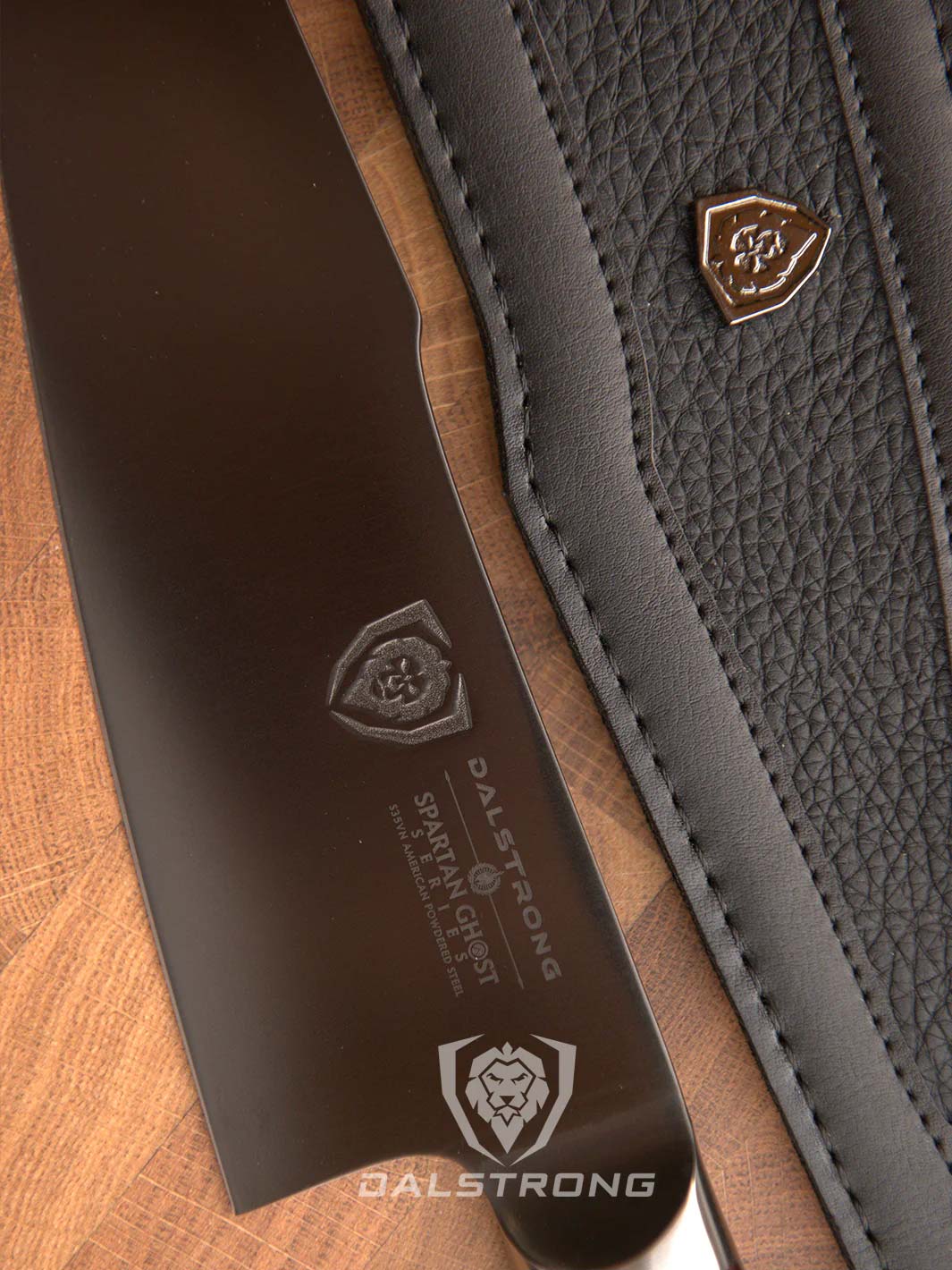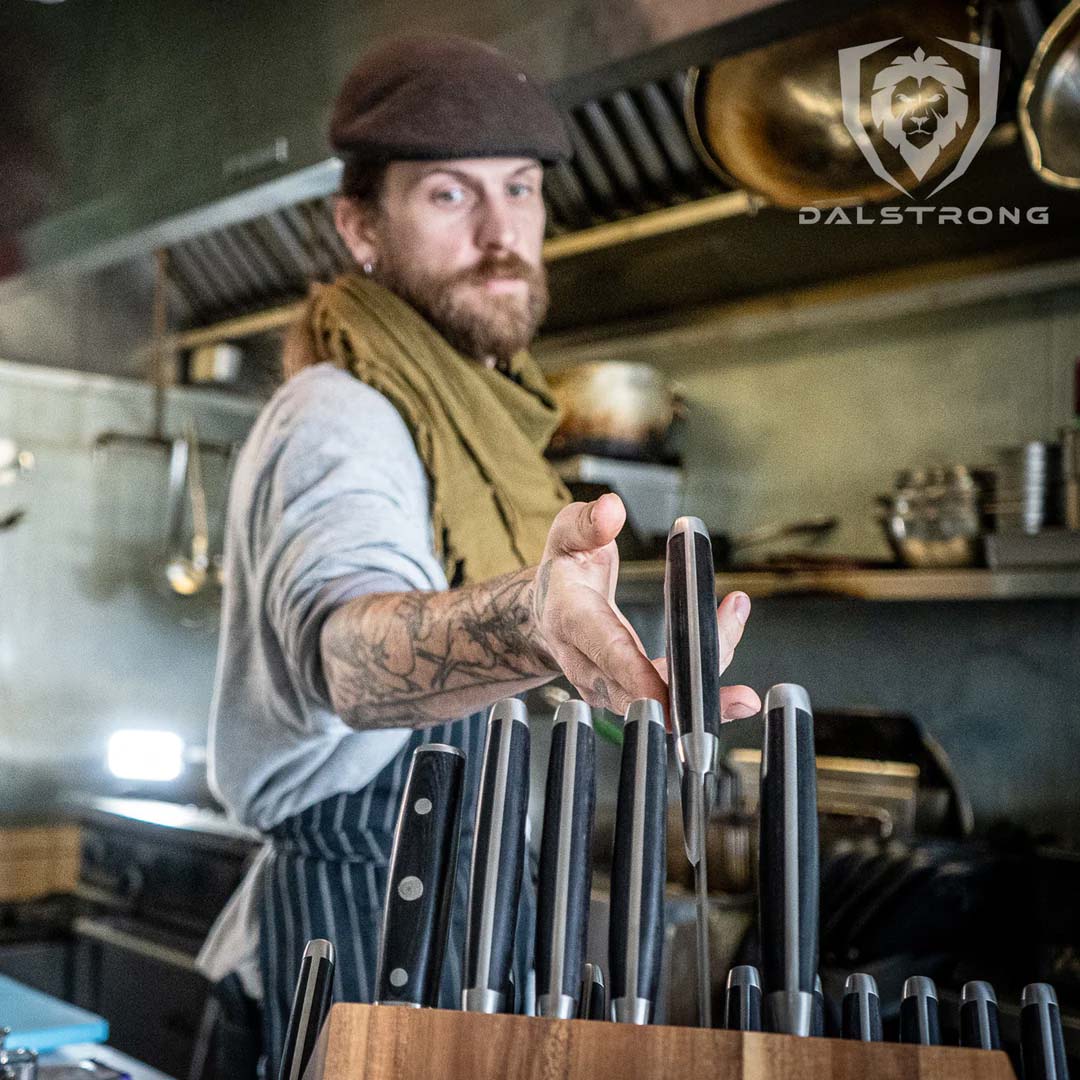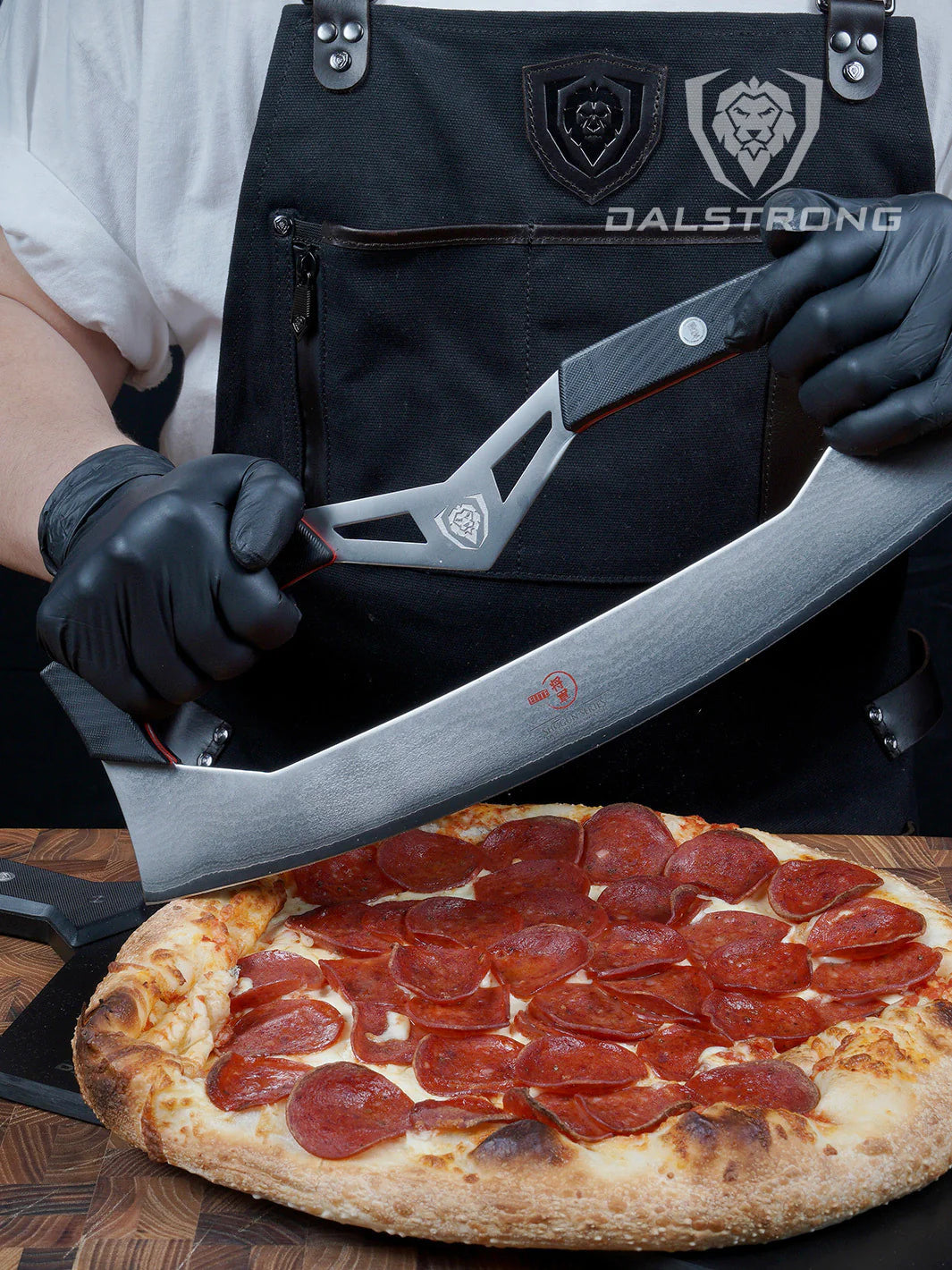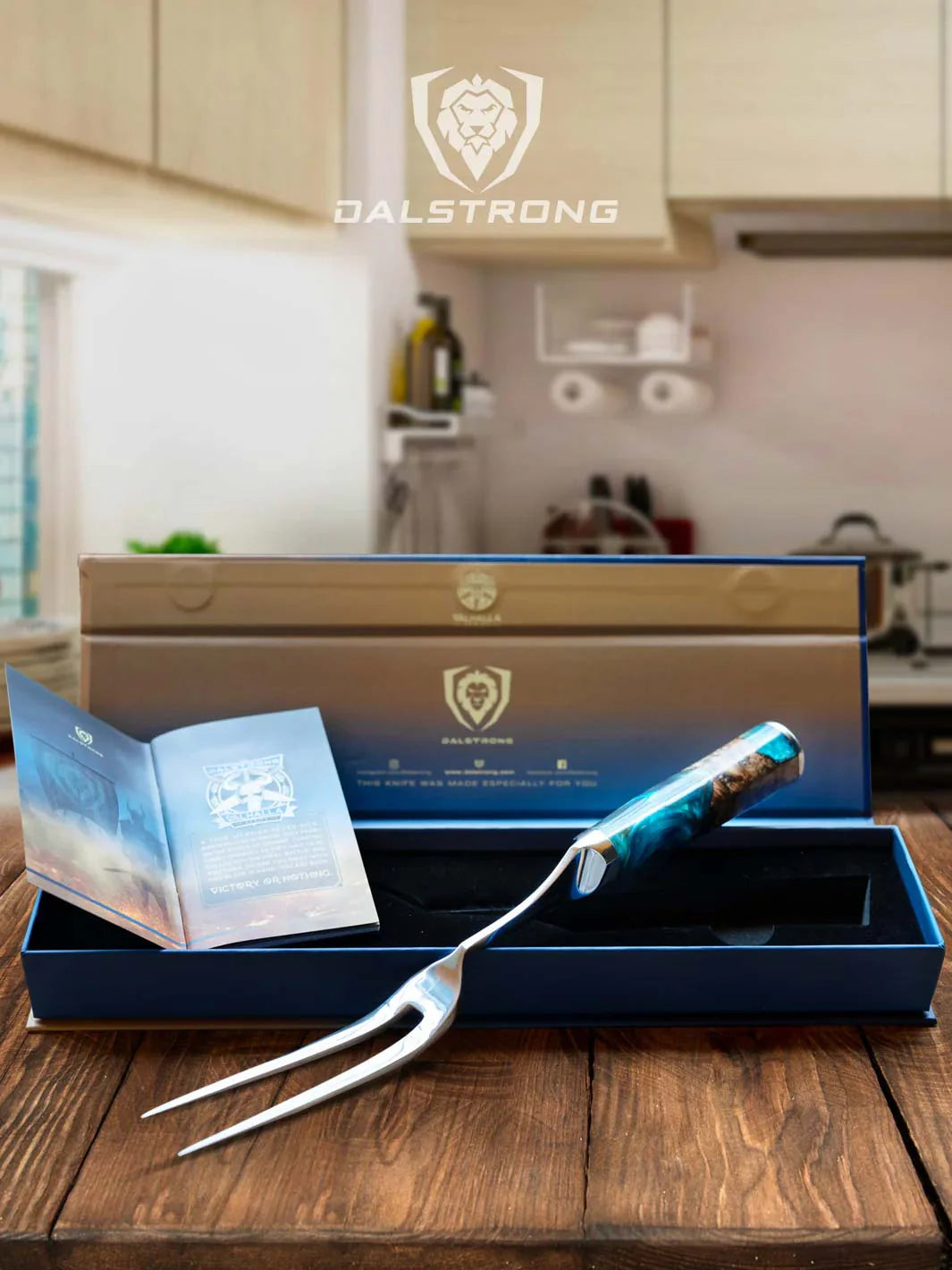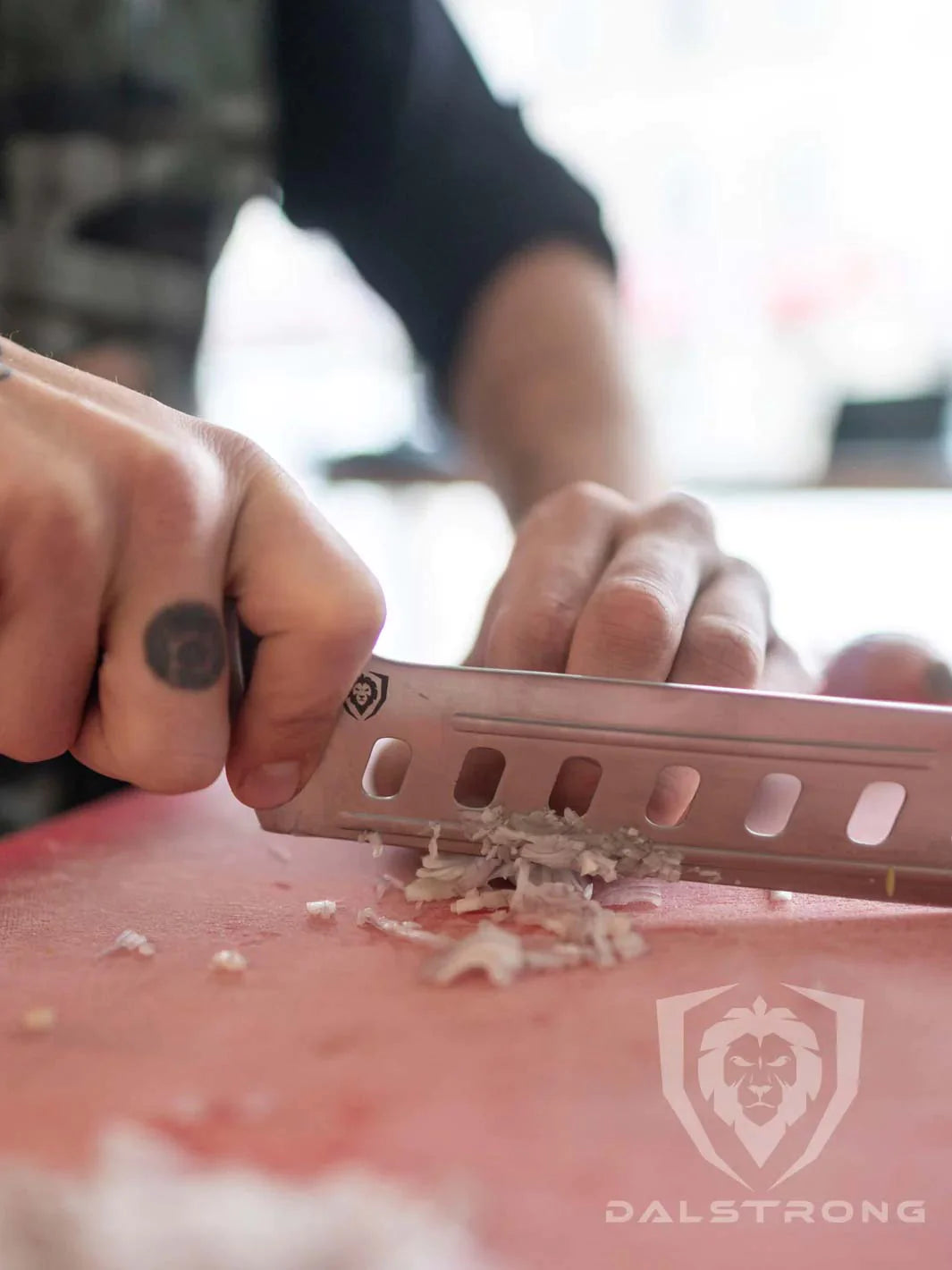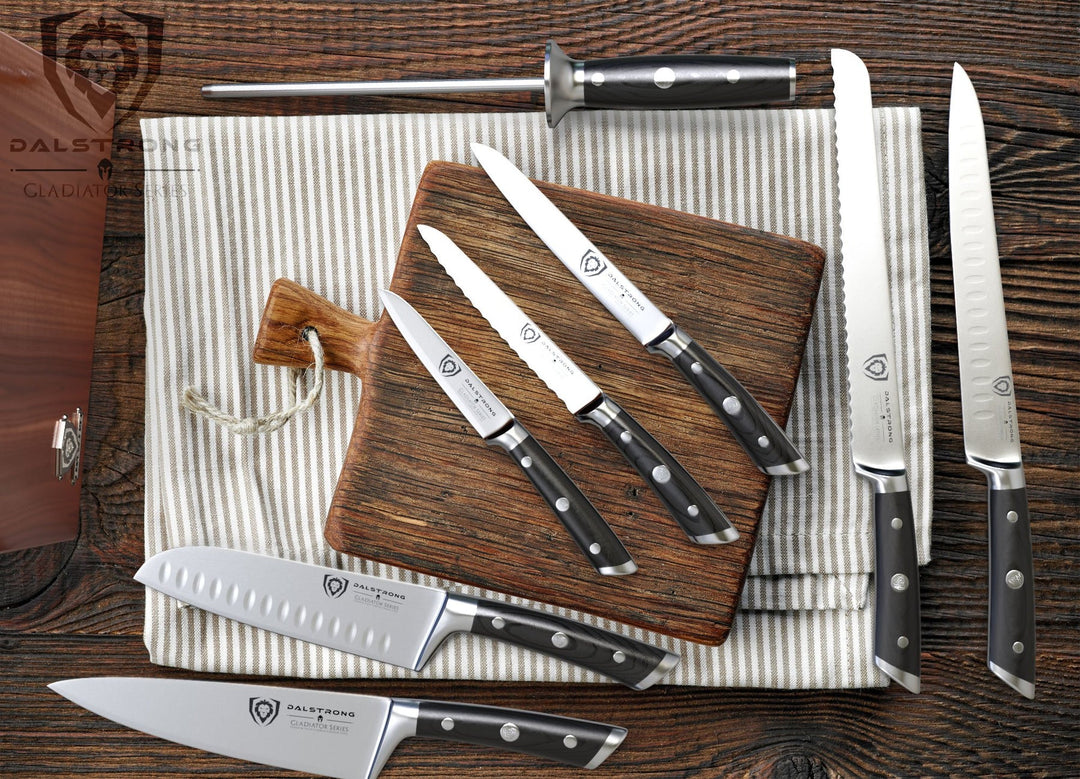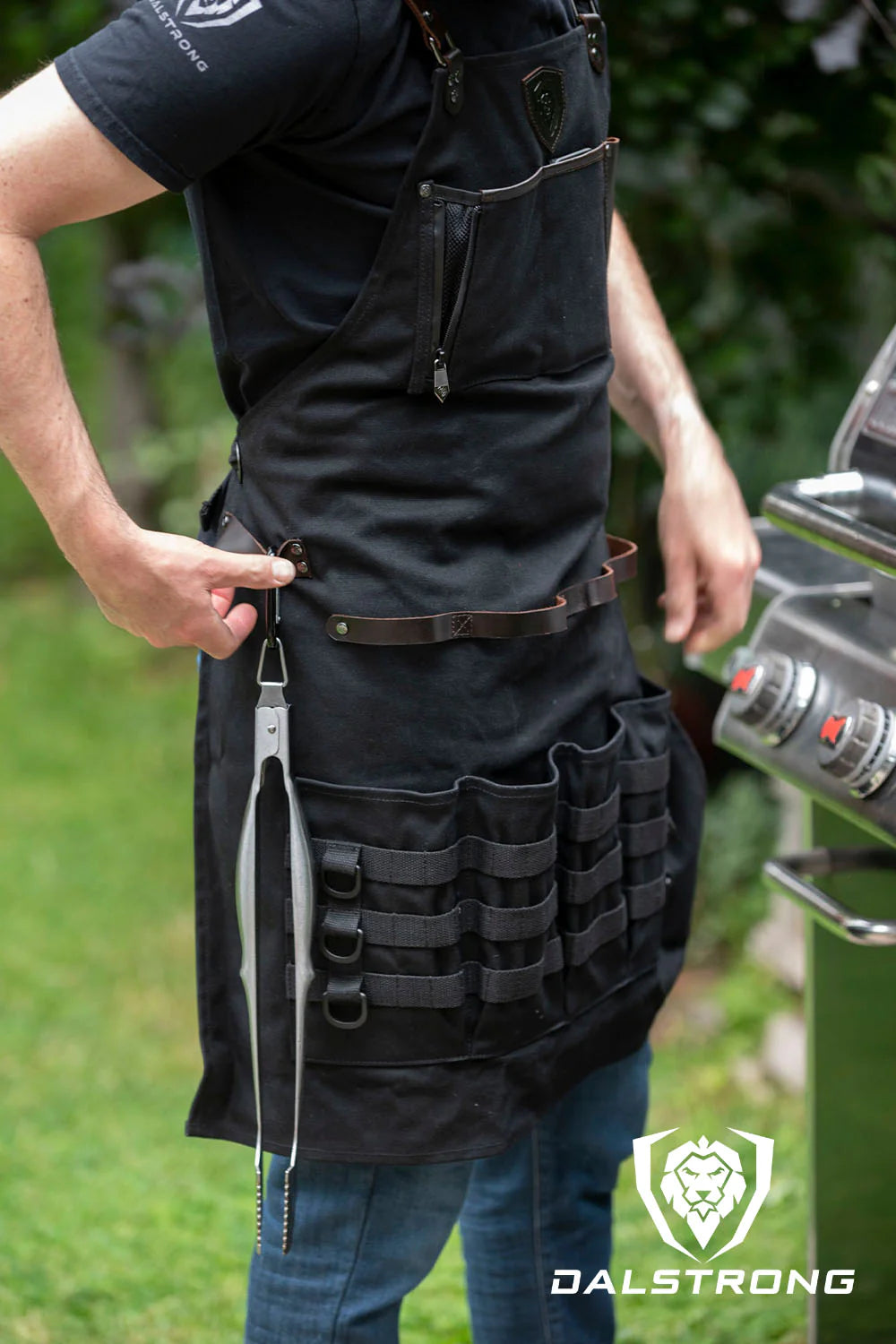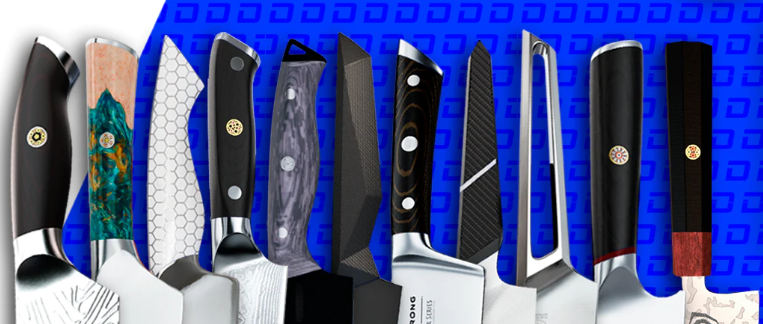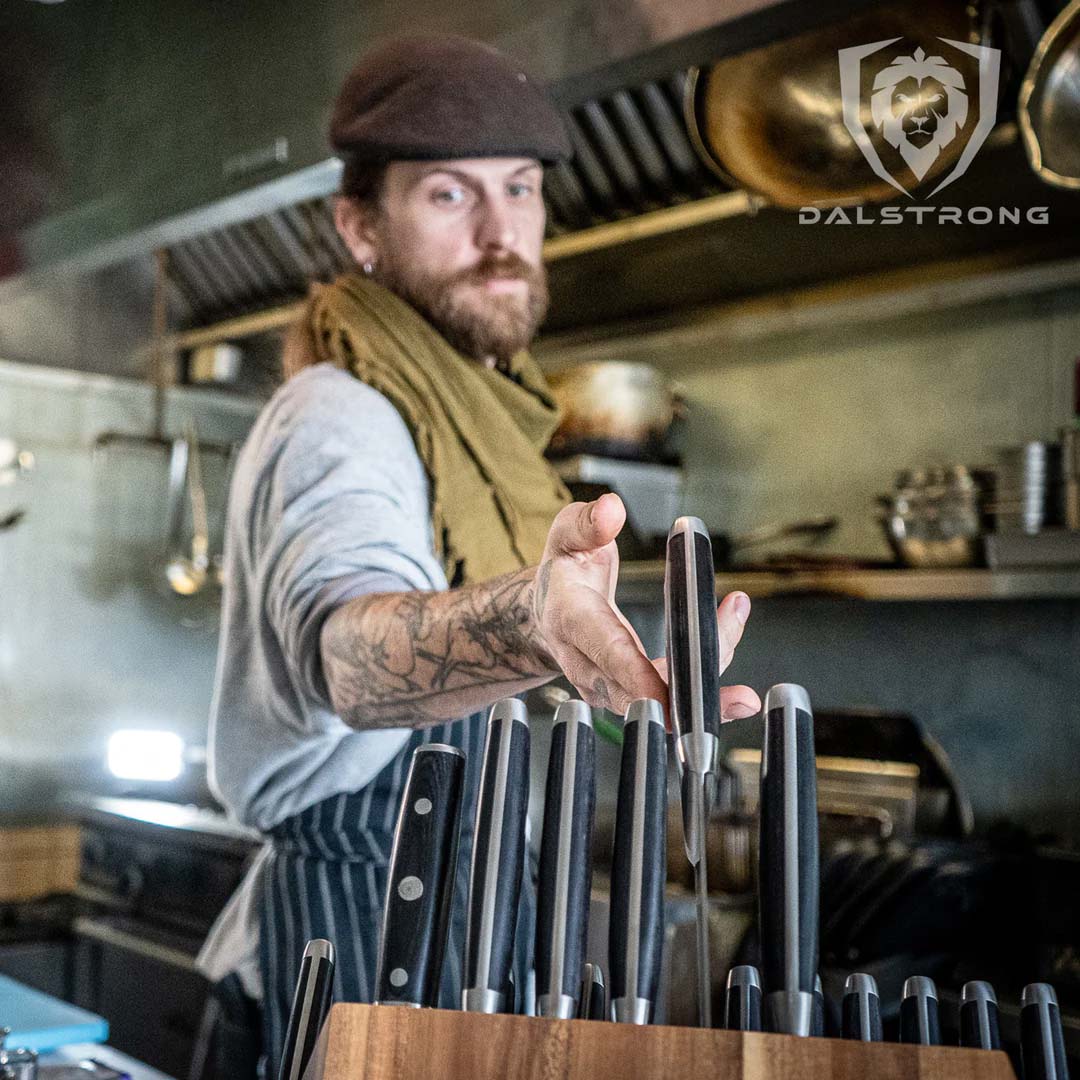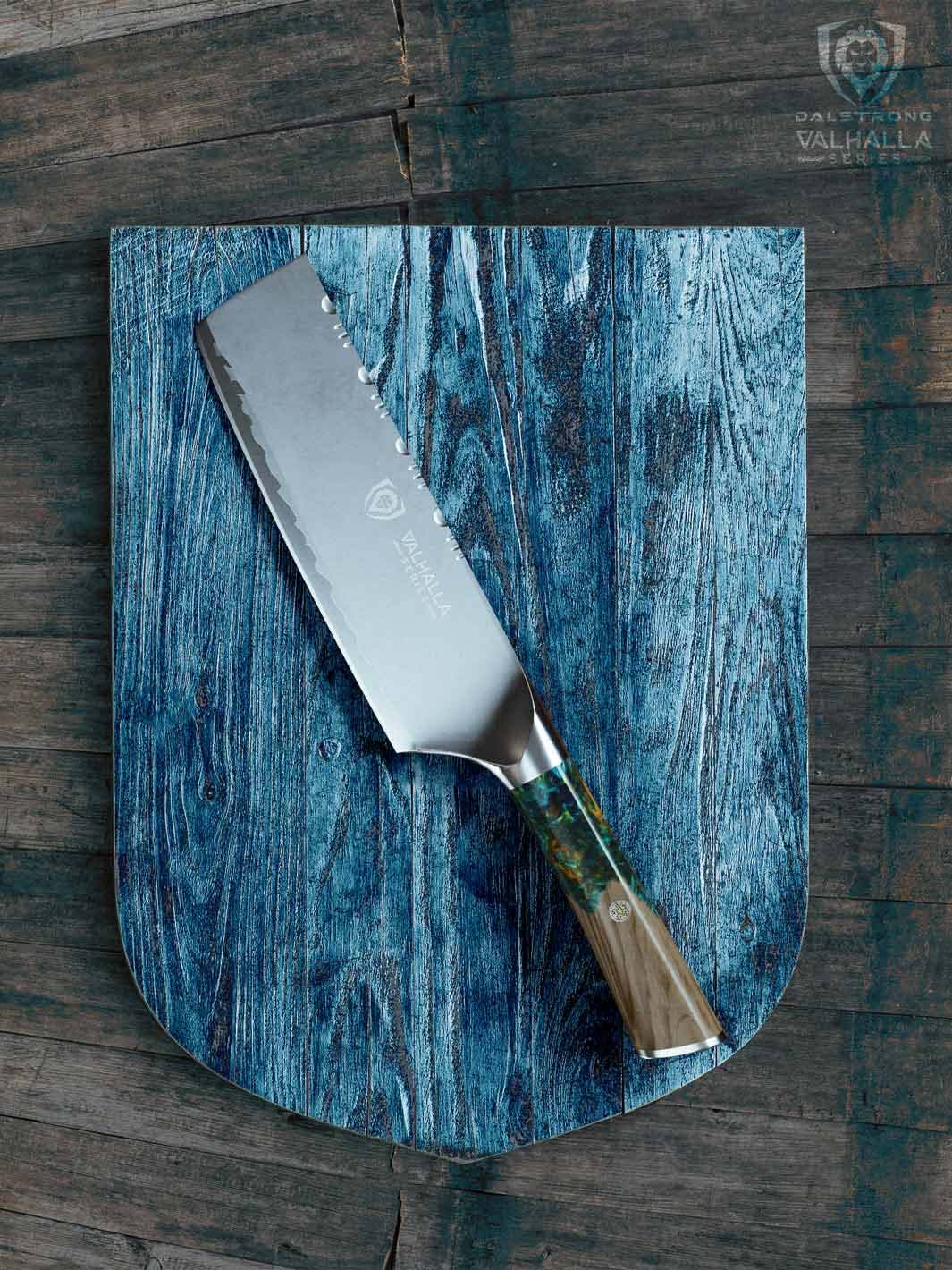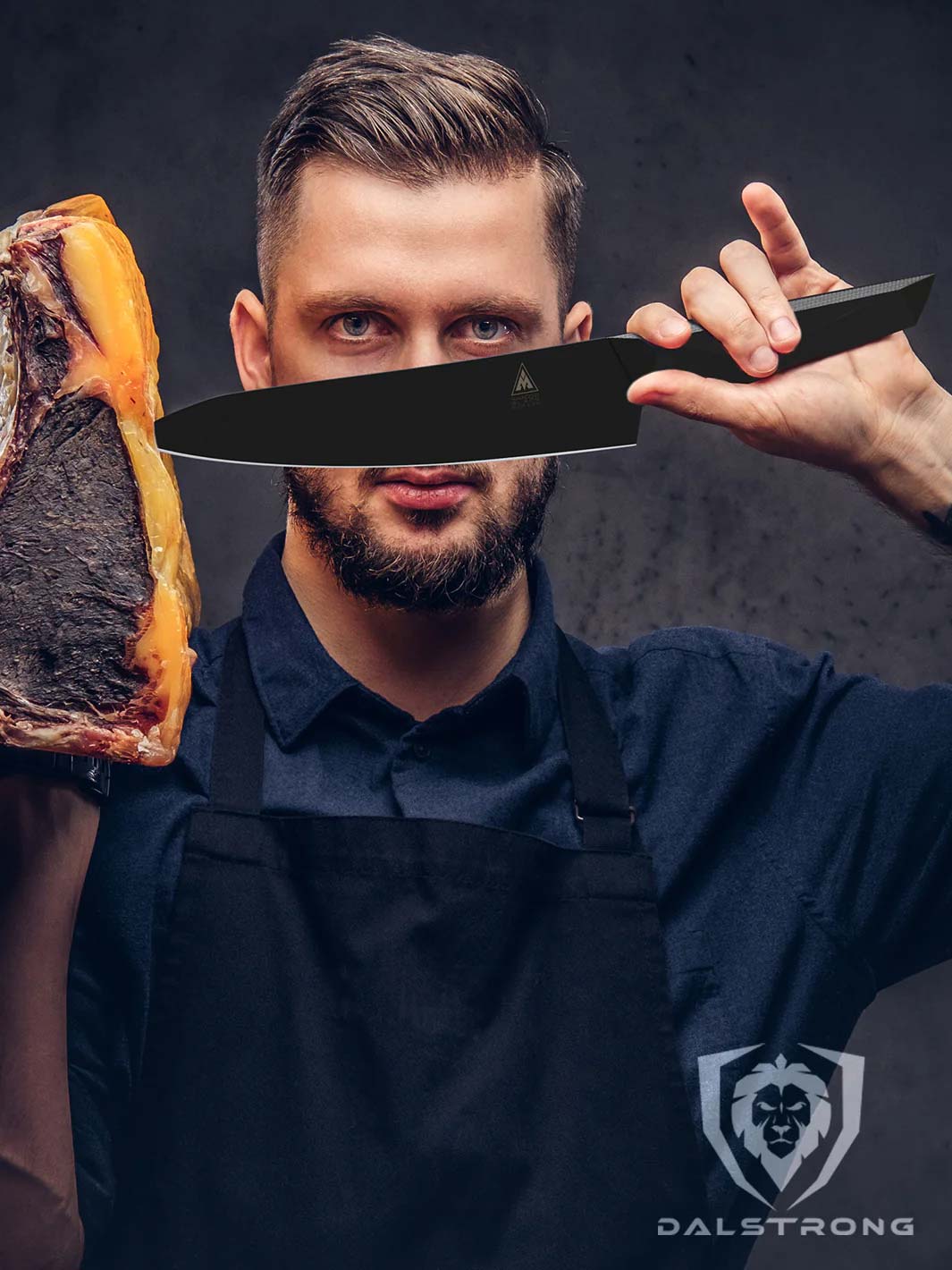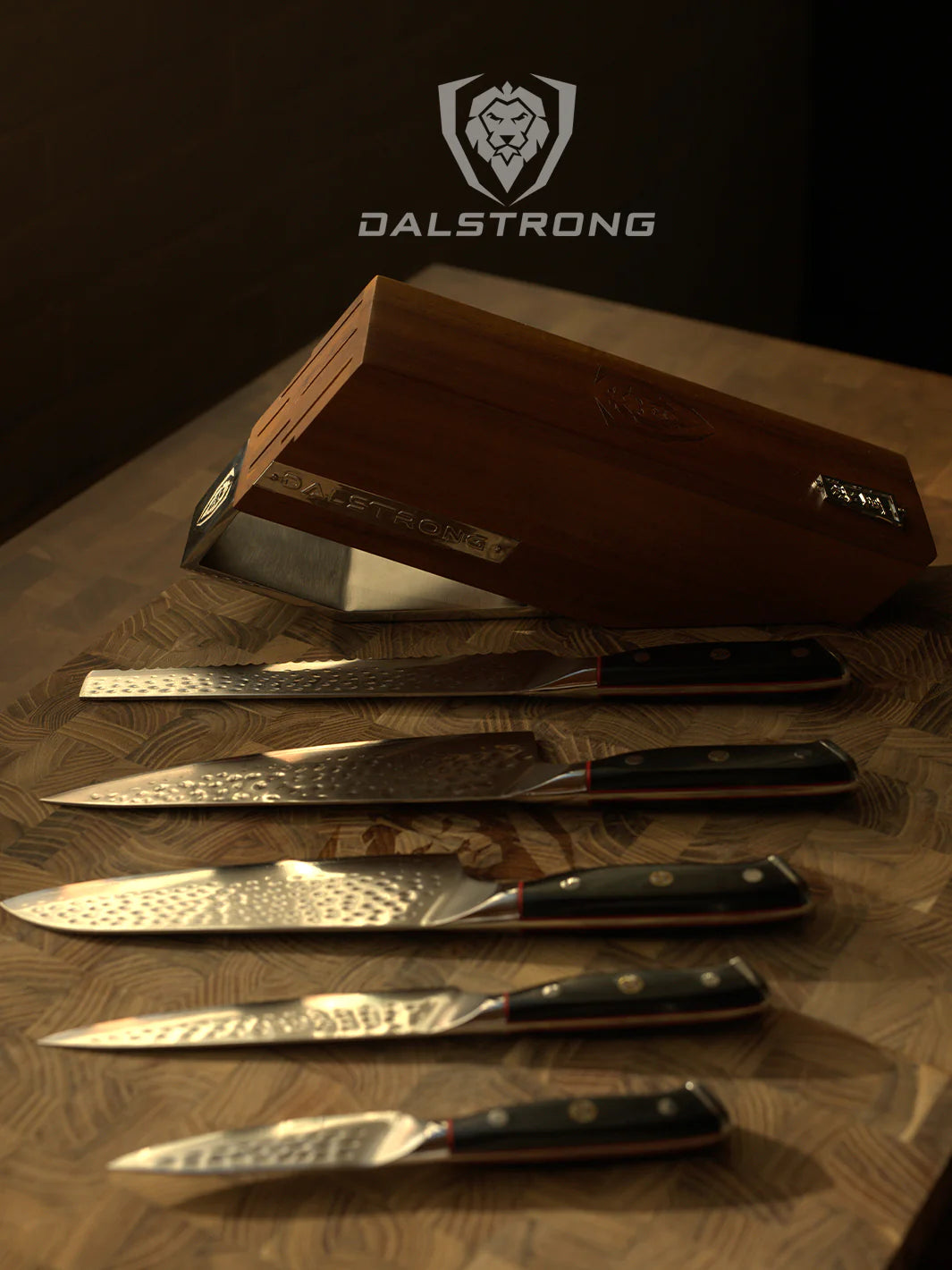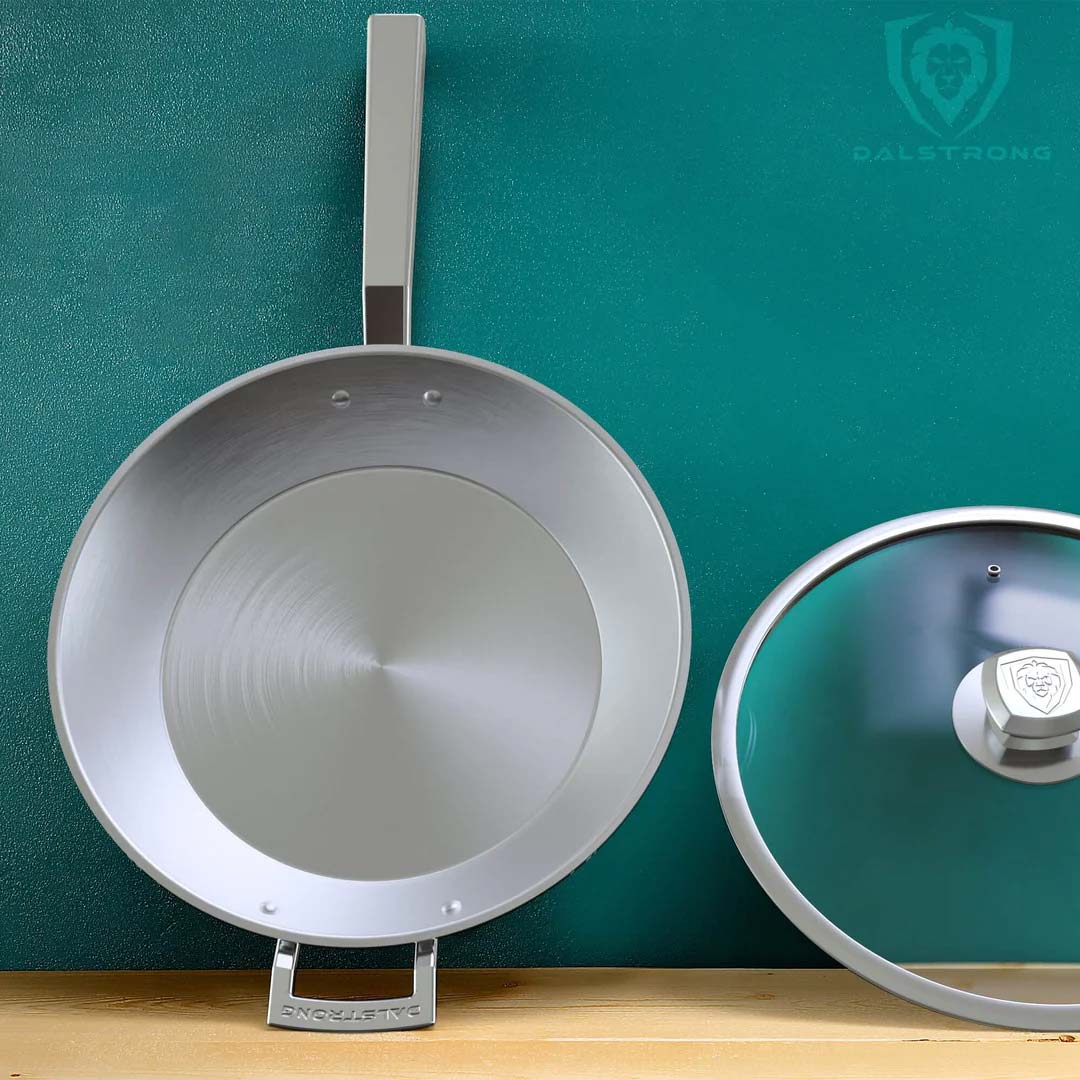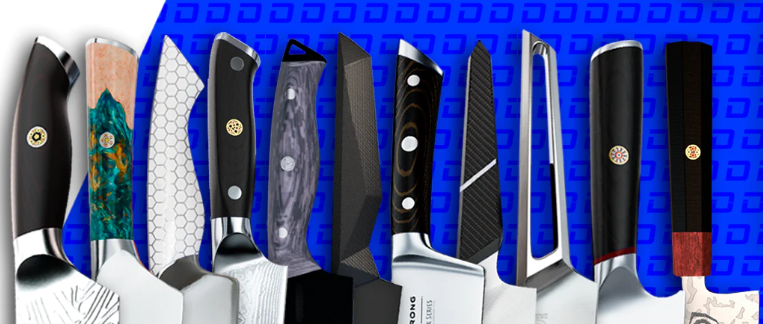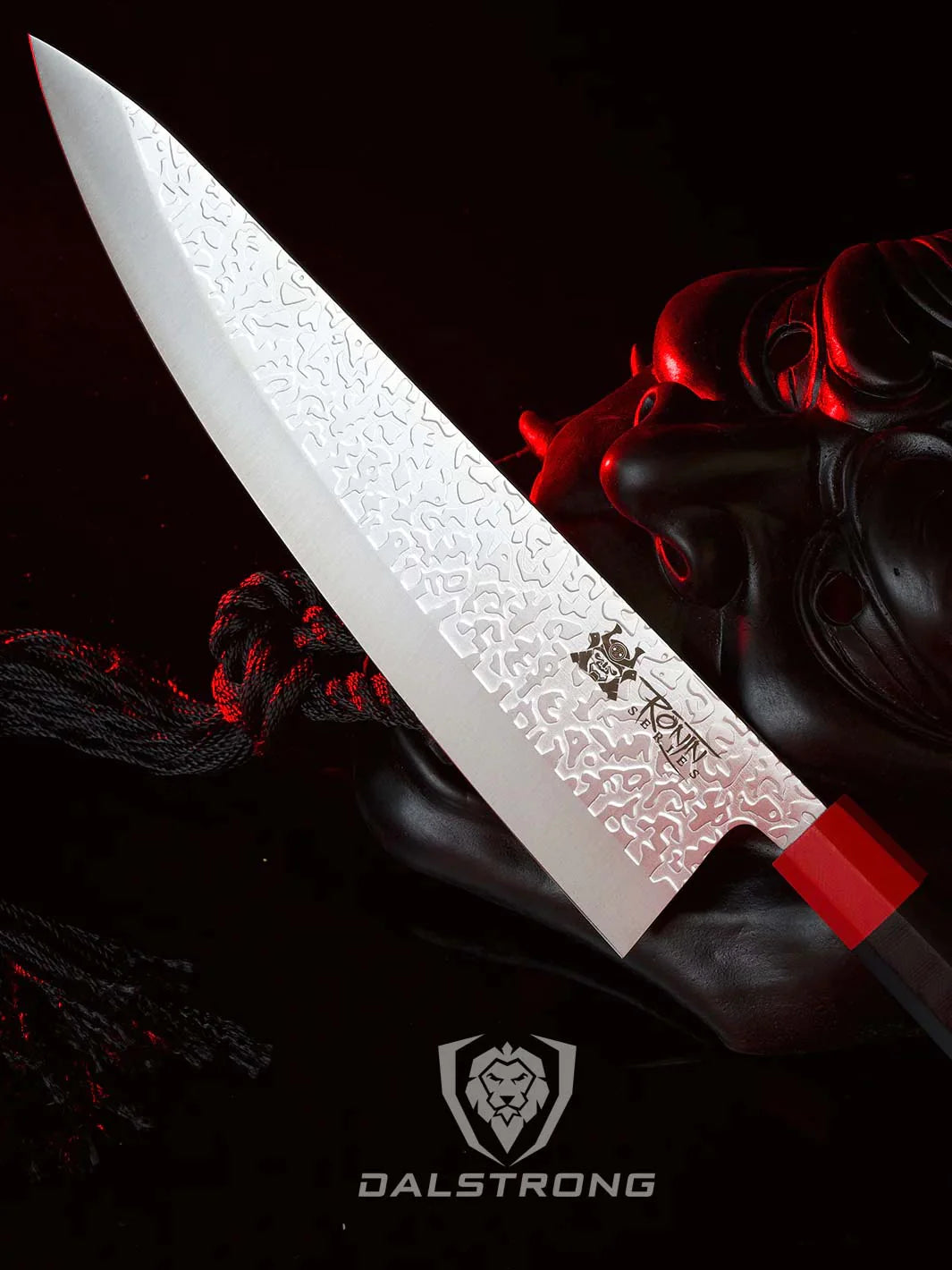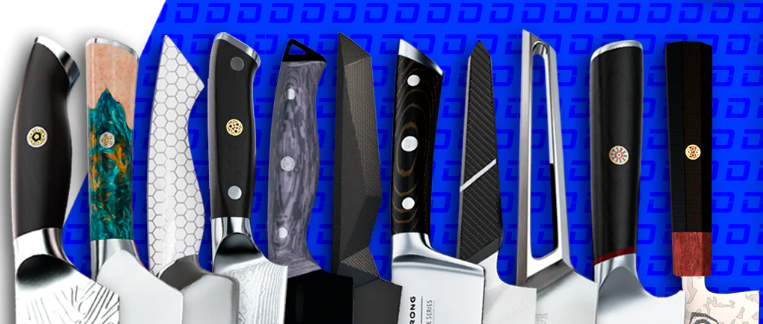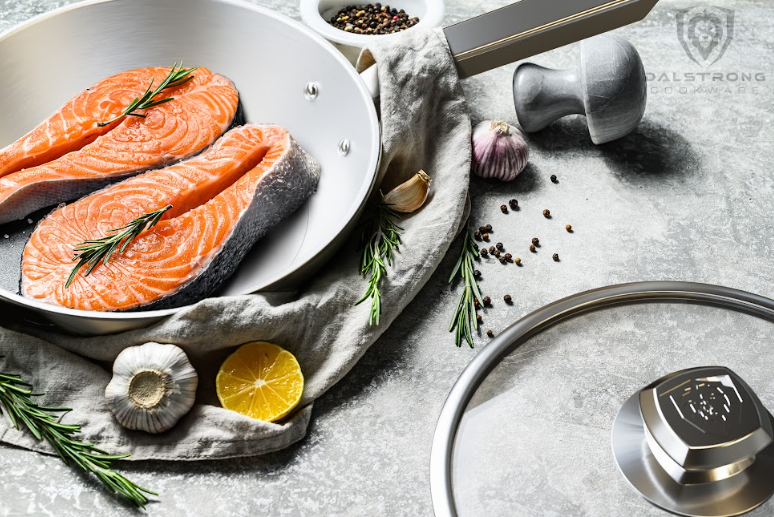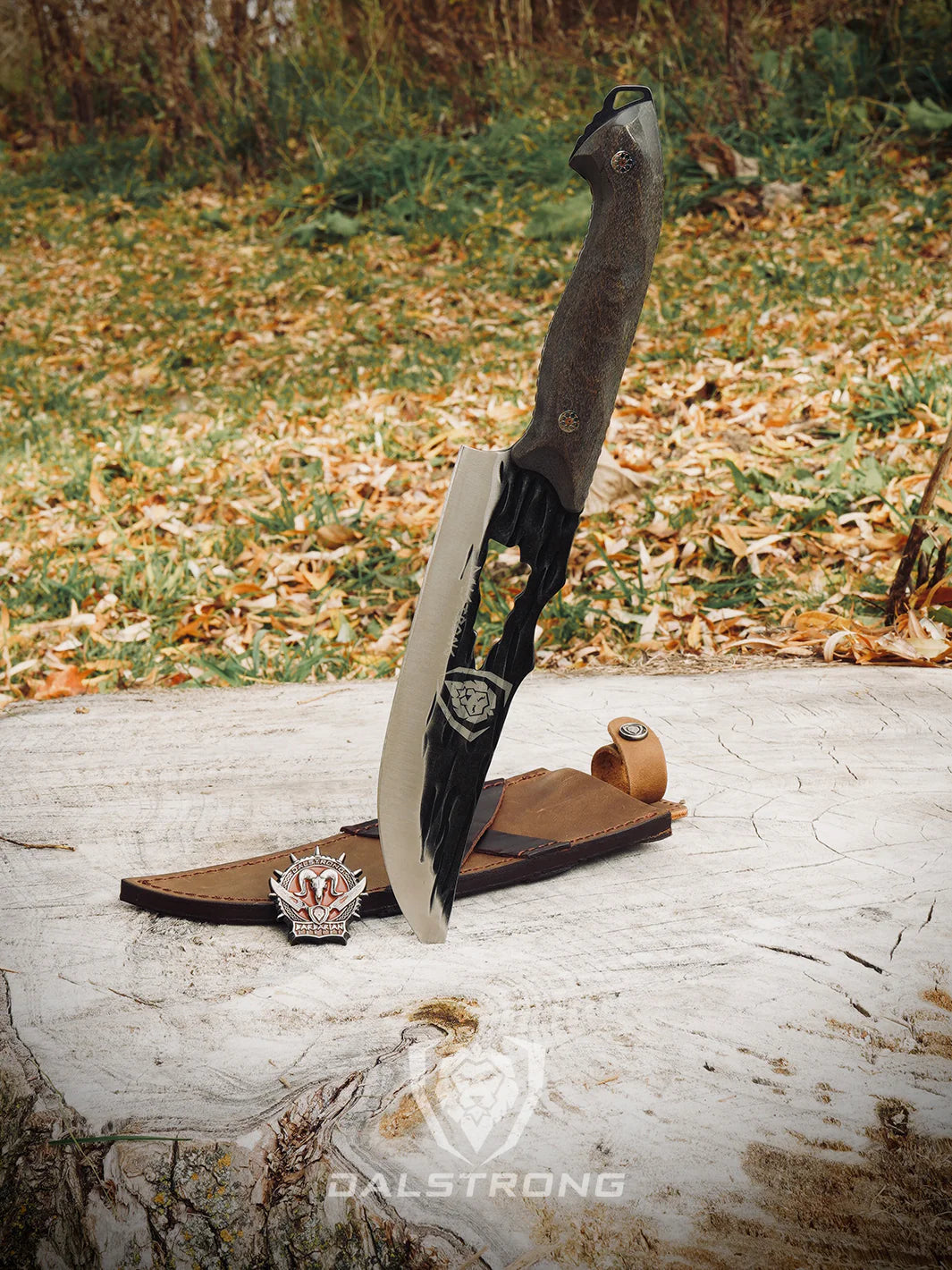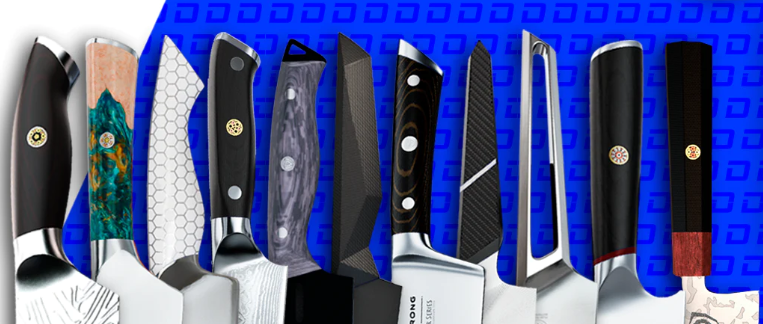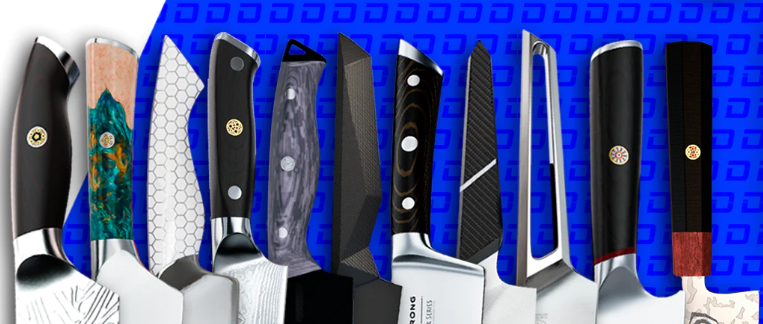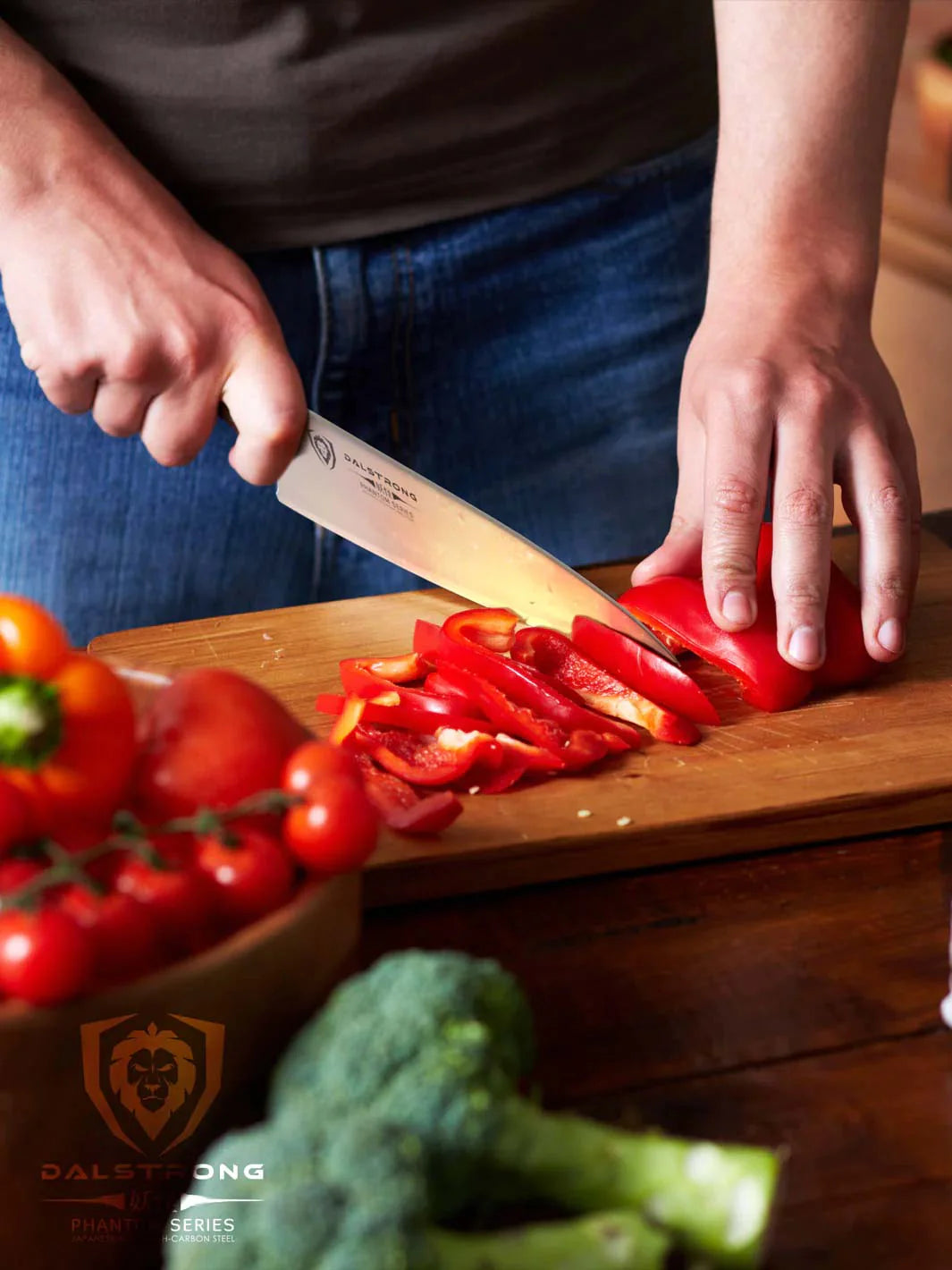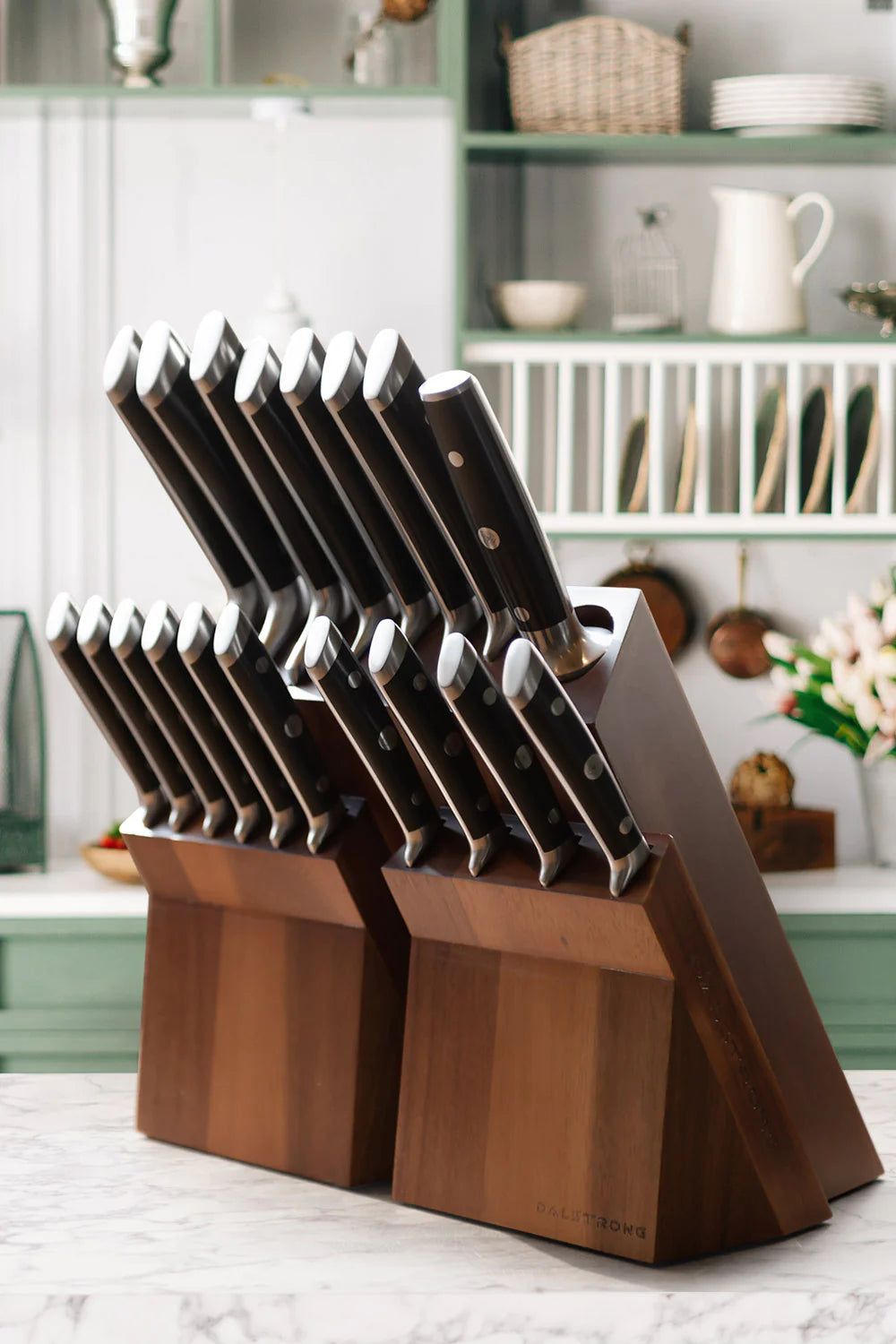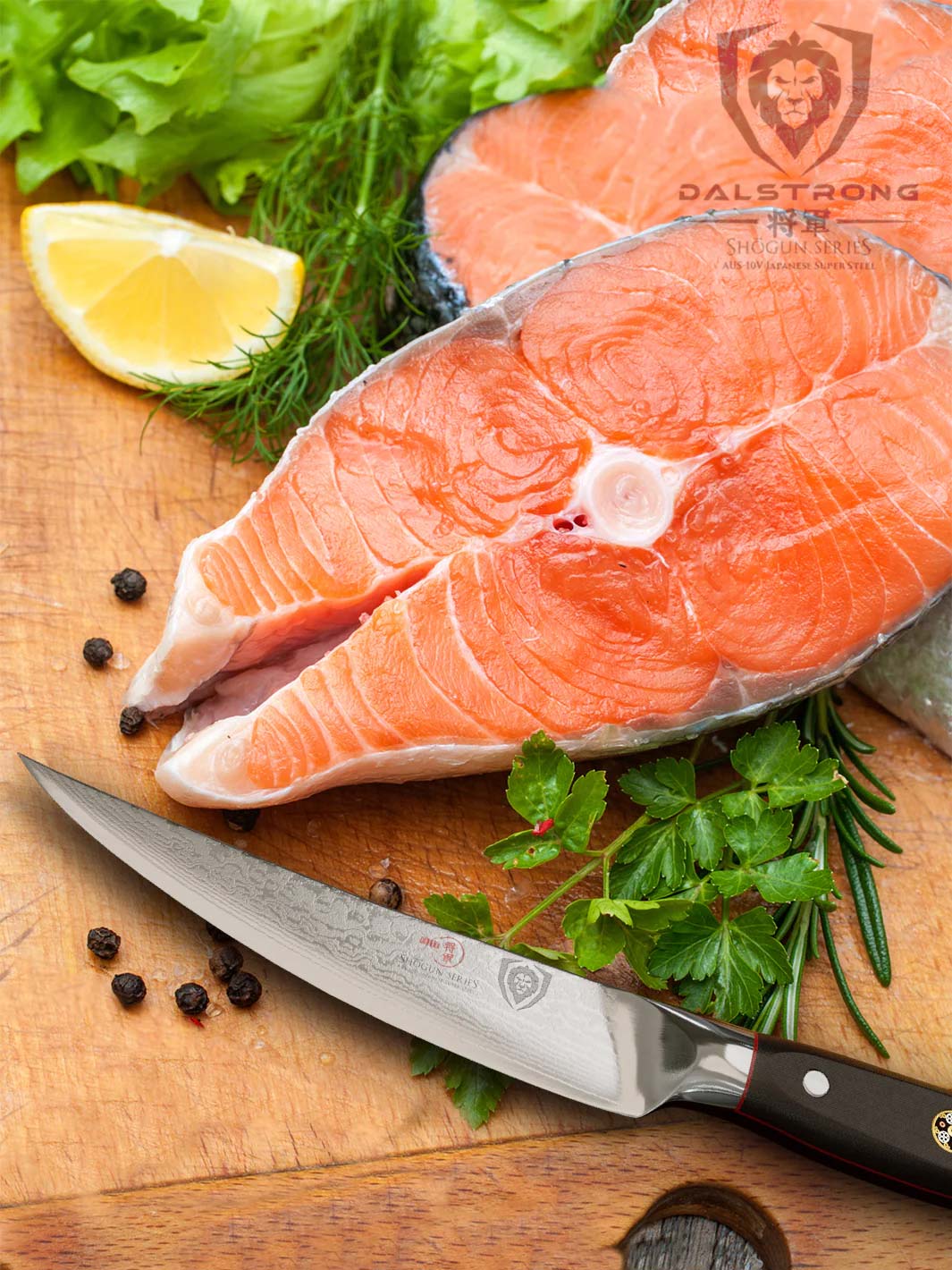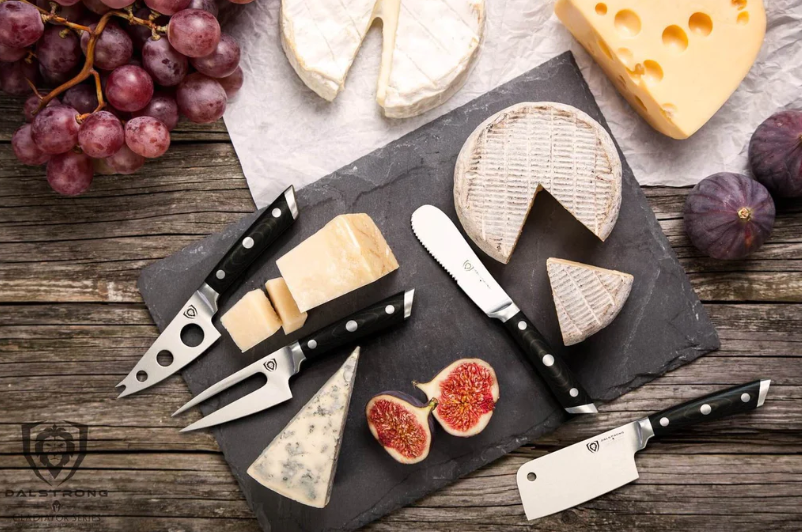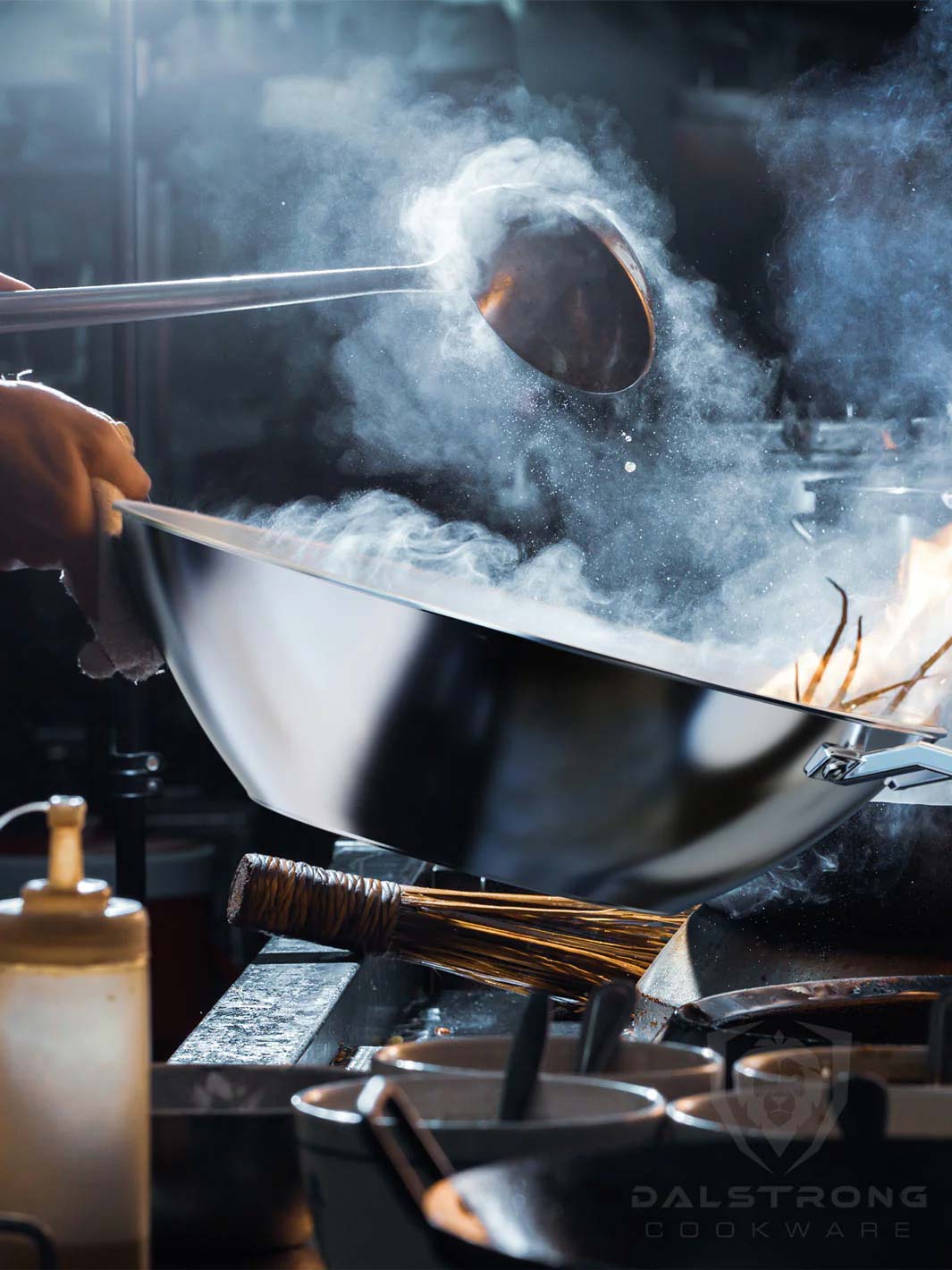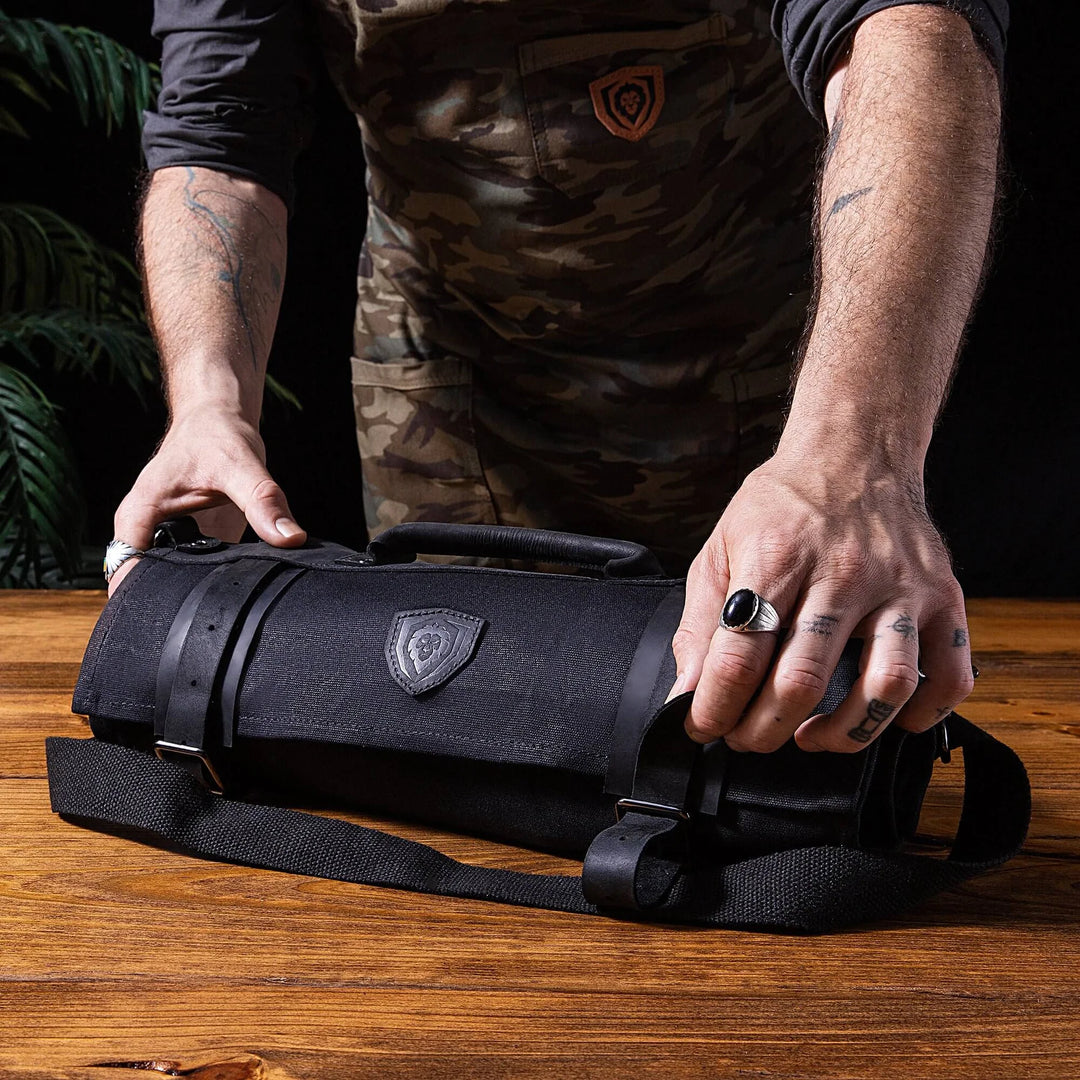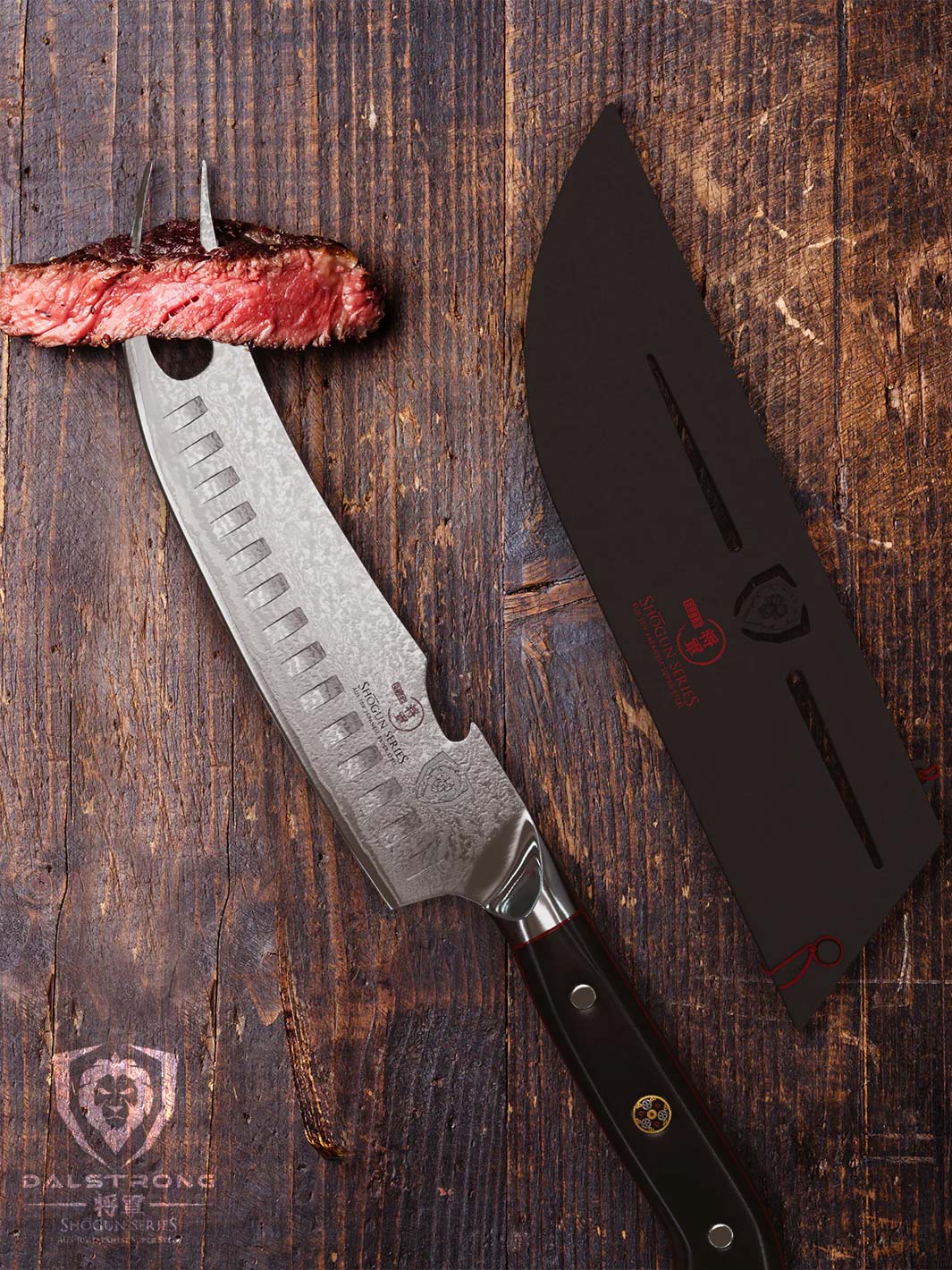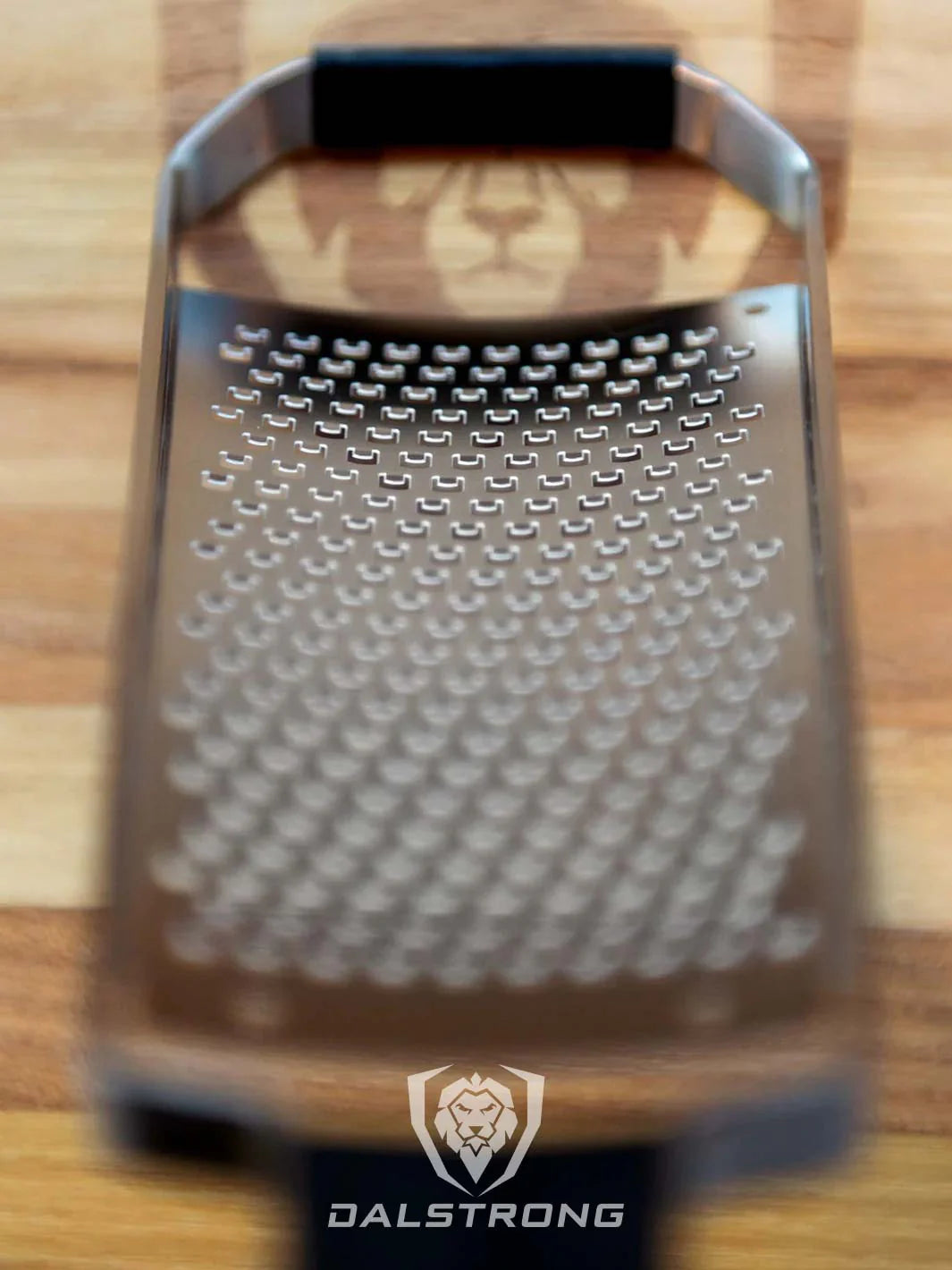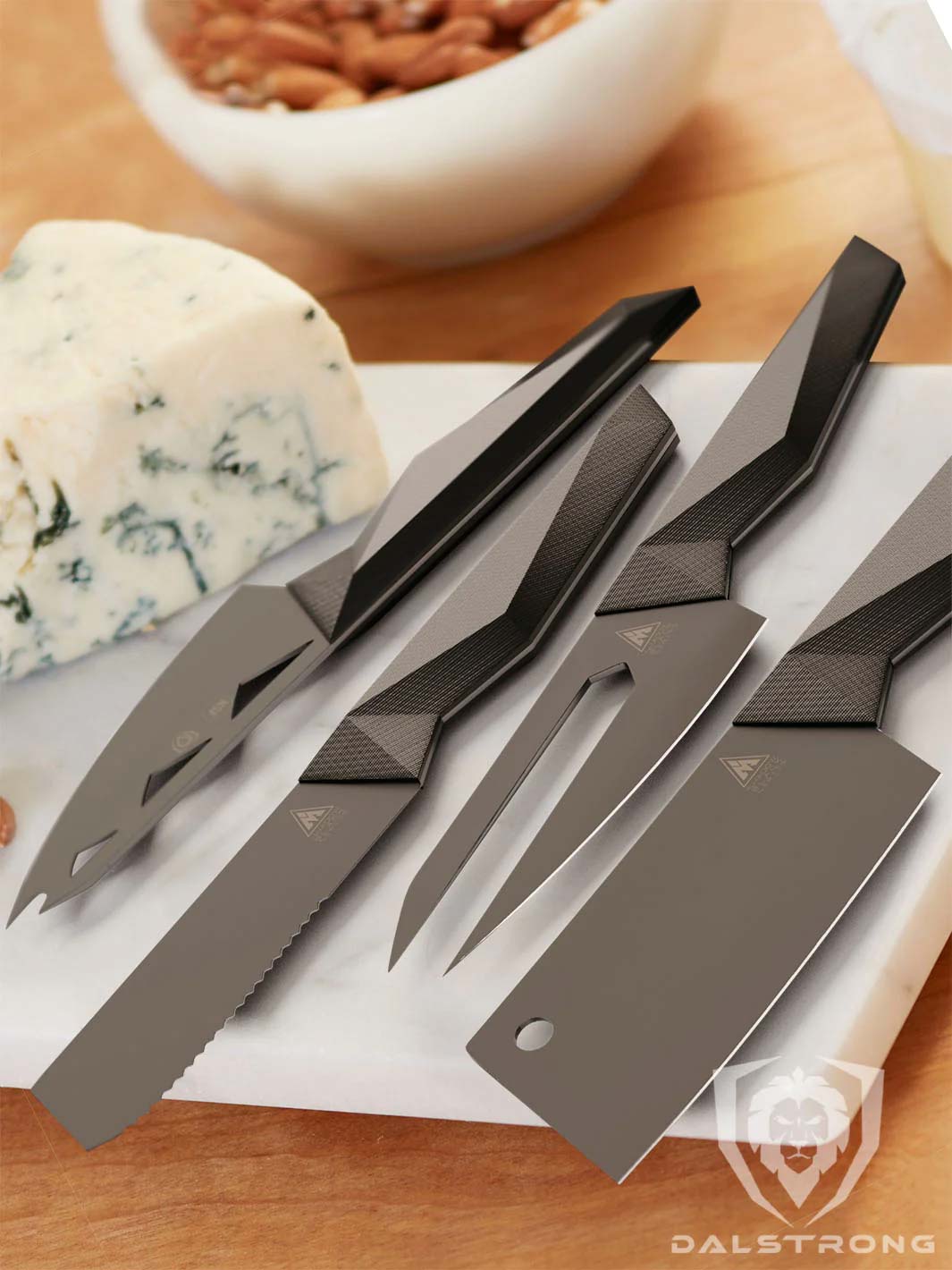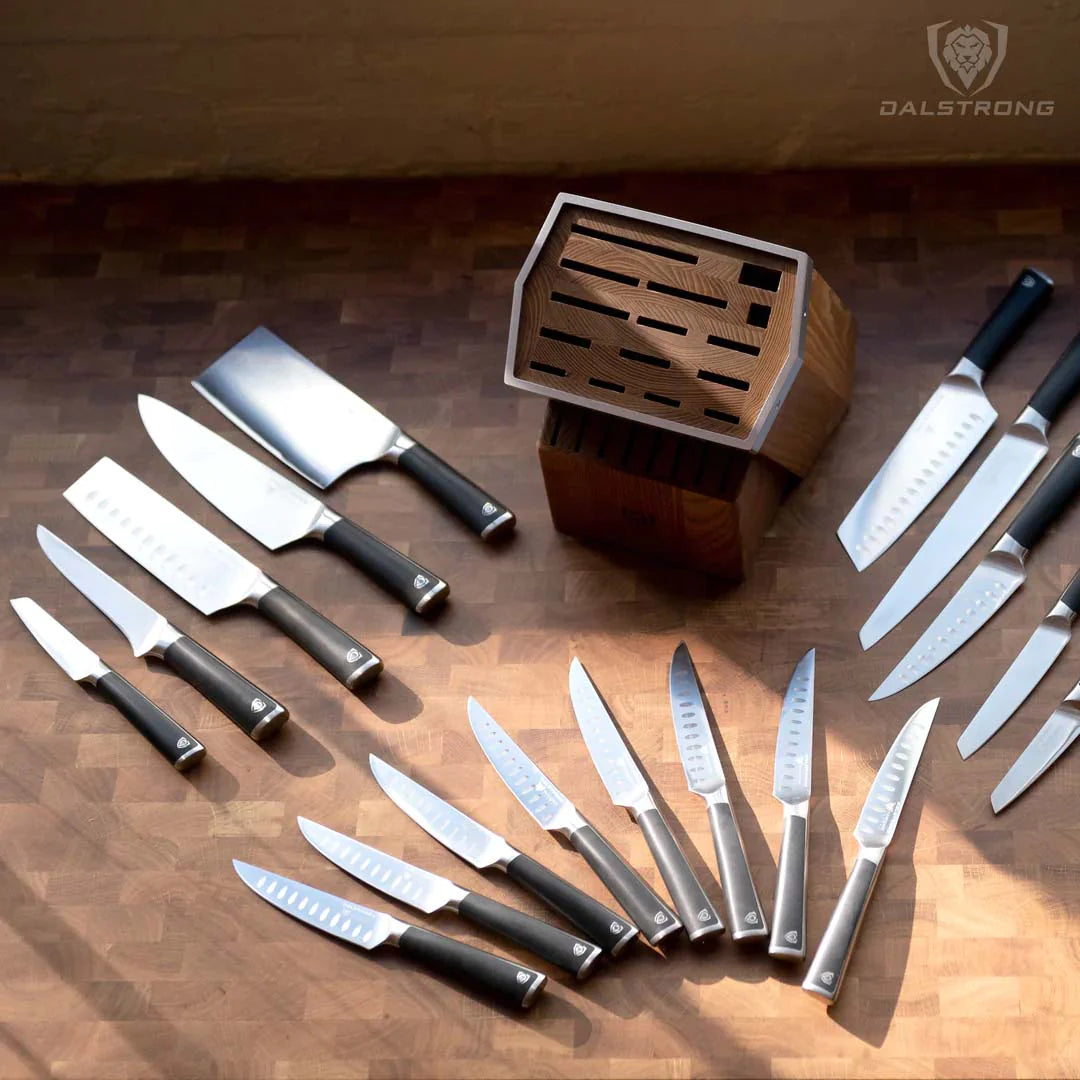Quick Guide On How To Pick A Chef Apron
 American Legend Blue Denim | Professional Chef's Kitchen Apron | Dalstrong
American Legend Blue Denim | Professional Chef's Kitchen Apron | Dalstrong
A chef apron acts as an armor for the chef’s body and clothes, but it’s also so much more than that. This quick guide will help you understand which type of chef apron is best for you and how to pick the best one!
1. Why Every Home Chef Needs An Apron
 The Gandalf Professional Chef's Kitchen Apron | Dalstrong
The Gandalf Professional Chef's Kitchen Apron | Dalstrong
Well, there’s the obvious reason: protecting your clothes from stains, spills, splashes. In an extreme scenario, an apron can even protect you from a potential burn or injury while cooking. But is that it, though?
A high-quality, good-looking apron that fits your style is almost non-negotiable if you spend a lot of time in the kitchen. Yes, for protection, but also for empowerment. The truth is, the minute you put on your apron, it’s like you are changing your mindset from normal mode to chef mode.
Also, let us not underestimate the good “extras” that an apron can offer, like multiple pockets to store all your essential goods; loops to hang towels or even body temperature control. Not every apron comes with those advantages, though, but if you keep reading, we put you in the direction of those that do.
2. Different Styles Of Aprons
Bib aprons
Bib aprons are adjusted at the waist level and also feature a neck strap. These are the most popular type of apron, probably because they excel at adapting to different bodies and preferences.
Their versatility allows them to be used by home cooks and kitchen staff alike. They cover most parts of the body that are vulnerable to kitchen accidents. A proof that this is the classic apron: Bib aprons are sometimes called “chef’s aprons”.
There are variations like the “tuxedo apron”, which features an elegant neck shape to be used along with a bow or a tie.
Waist aprons
They start at the waist and cover the lap area. The lack of upper body coverage is not ideal for chefs and cooks, but it’s perfect for staff walking through the place a lot, like waiters and waitresses. I do find them very elegant in a way, but are not the most functional on this list.
Bistro aprons
Just like waist aprons, these start and adjust at the waist, but the difference is bistro aprons are considerably longer and extend to the chin. Bistro aprons are also used as server aprons, especially in more upscale restaurants.
4-Way aprons
Another type of apron that starts at the waist, but with one major characteristic: 4-way aprons are made of four different layers, which you can switch at will. If the external layer gets stains, for example, you can just flip to the next clean one.
Dishwasher aprons
They are waterproof and extend to the knee, to protect the body from spills and splashes while dishwashing.
Aprons by Fabric:
- Leather apron
- Cotton apron
- Poly Cotton (polyester + cotton)
- Neoprene apron
- Denim apron
- Plastic apron
- Polyester aprons
- Disposable aprons
3. Factors To Consider Before Buying An Apron
- Because their main purpose is protection, the apron material is probably the most important factor to look at. Cotton is a reliable classic (Unless you’re looking for a grilling apron, in which case we recommend looking at other options). Leather aprons are highly durable and resistant, with the added benefit of protection against heat. A waxed cotton apron and denim aprons are also great choices.
- The second most important thing is the style. Does it match your personality? Does it go well with your chef pants? You may like the young, unmistakable vibe of denim; or you want to make a statement with black aprons. Or if you’re a chef, surely you want to send a message with a more sophisticated design. Whatever you choose, make sure you feel good in it!
- After you pick a style, you should check more technical features of the design, like adjustability, shape, length, etc. Most aprons come in standard sizes, but you want one that is practical, well manufactured and comfortable for your body.
- The intended use is something to think about as well. Professional chefs need stronger, more resistant restaurant aprons; while home cooks have a little more freedom to choose and don’t need as much (but also shouldn’t settle for a cheap apron). Chefs and bartenders, for example, also need different characteristics in their aprons. Needless to say, aprons for cooking are different from aprons in other industries like healthcare or housekeeping.
- Then, another thing to consider are the “extras”. Some aprons are very simplistic and that may be just what you’re looking for. But if you run a busy kitchen, you may want to consider things like the number and size of pockets.
4. Top Dalstrong Aprons For You
If you are a BBQ aficionado, this out-of-the-ordinary bib apron is the way to up your game to pro. An apron designed for grill masters in mind, to cover all their needs and desires (even the ones they didn’t know they had).
PROS:
- The material is waxed canvas (a dense cotton fabric), built to withstand fire, water, smoke, knives and potential stains.
- Not one, not two, but FOUR front pockets, deep enough for keeping all your important tools at hand.
- Not enough? You also get additional pockets for your phone, a thermometer or your beer (this apron comes with a beer opener!)
- The adjustable crossback straps ensure that it will fit comfortably and safely.
- Side loops to hang a towel, for example.
CONS:
- This apron is for BBQ lovers. If you are any less than a BBQ lover, it may be too much.
- This may be just my personal opinion, but I see this apron more attractive for home cooks and home barbecues than a head chef at a gourmet restaurant (see next recommendation).
2. Dalstrong Professional Chef's Kitchen Apron
The sober, elegant, premium design in this apron makes it perfect for many occasions and contexts. Basically, you can’t go wrong with this one: If you like cooking, and need to show your good taste beyond your recipes, this apron is for you.
PROS:
- Professional grade chef apron.
- Waxed canvas is waterproof, super durable, super resistant.
- Three big front pockets.
- Two chest pockets for things like a pen or a notepad.
- There’s more: a kangaroo pocket and towel loops.
- Back adjustable harness, built in genuine leather, to help distribute weight, prevent strains and make your long kitchen hours more comfortable.
CONS:
- If you’re looking for a fancy or out-of-the-ordinary-design, you may pass on this sober, neutral approach.
- The opposite is also possible: If you’re just getting started, you may be looking for something a bit simpler, like the Gandalf apron.
3. “The Culinary Commander” apron by Dalstrong
Owning and wearing a leather apron like this means you’re serious about your culinary career. Even though the word “Commander” suggests it’s best for head chefs; I’d wear it even if I’m just a beginner cook. ‘Dress for the job you want’, right?
PROS:
- Top-grain Brazilian leather, built to last.
- This apron is always cool (pun intended) no matter how hot your grill is.
- Crossback harness with extra-thick buckles.
- Three chest pockets, one large knife pocket, one towel loop and a hidden pocket for your personal affairs (cellphone, wallet, cash).
- The packaging is fantastic.
- Honestly, this is the ultimate apron to feel good, look good, and do good in every foodie adventure you embark on.
CONS:
- The design is a bit hard-to-miss, if you know what I mean. You have to be comfortable with people looking at you.
- It's premium quality, and the price reflects that. At this price, you have to consider how serious you are about your life in the kitchen. If you’re just passing by, you may hesitate to get this one.
4. “The Gandalf” Professional Chef's Kitchen Apron
A warrior (or a wizard?), just as yourself, for your day to day challenges. I like this apron because I find the gray denim design bright, young and fresh, for those younger cooks (in spirit, not in age).
PROS:
- Amazing quality and design for an affordable price.
- Denim aprons are light-wight and easy to maintain.
- Fresh, modern denim design.
- Three front pockets and one hidden stash pocket.
- Details in genuine leather.
CONS:
- Some prefer a darker tone for their apron if there’s a high risk of stains.
- This particular fabric is not the best for grilling.
5. Aprons Care & Maintenance
- Whenever possible, handle the stains as soon as they occur.
- Different fabrics and materials will require their own special considerations. Always read the label, as not all aprons can go in the washing machine.
- A leather apron should never be washed (wipe it with a cloth when needed).
- If going in the washing machine, tie the apron strings in a bow.
- When not in use, we recommend you hang your apron, as opposed to folding it.
- If there is a difficult stain, it is advisable to use a special stain-remover before washing it.
- Line dry in the shade if possible.
6. Frequently Asked Questions About Aprons
How is the standard chef uniform?
There are many versions of a chef’s uniform as there are kitchens. A chef may wear a chef apron, a chef hat, a chef coat and chef pants according to their style and the style of the kitchen. Women chef coats are also different from men's chef coats.
What are the advantages of a leather apron?
Leather aprons are durable, easy to clean, and offer extra protection against heat and sharp kitchen utensils when compared to other materials.
Do you need a chef’s hat besides a chef apron?
Chefs hats are still a thing. Many chefs use hats for hygiene and for keeping hair and sweat away from food.
Do chefs and bartenders use the same type of apron?
Aprons for cooking are different from server aprons. Aprons for the serving staff usually don’t feature a neck strap, for example. Kitchen aprons need stronger materials and should cover the upper body.






































































































































































































